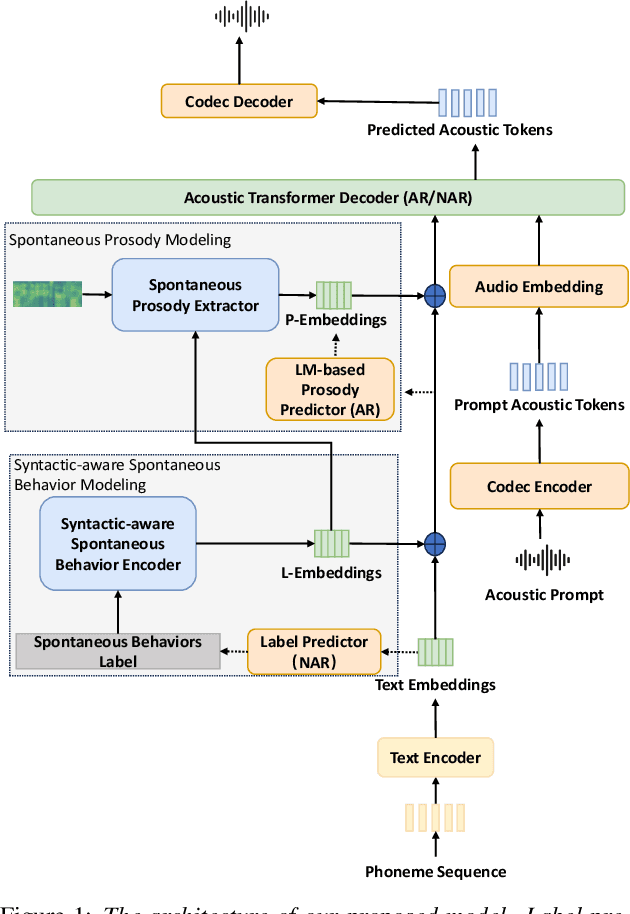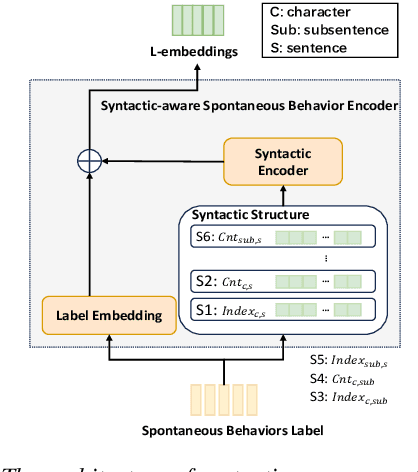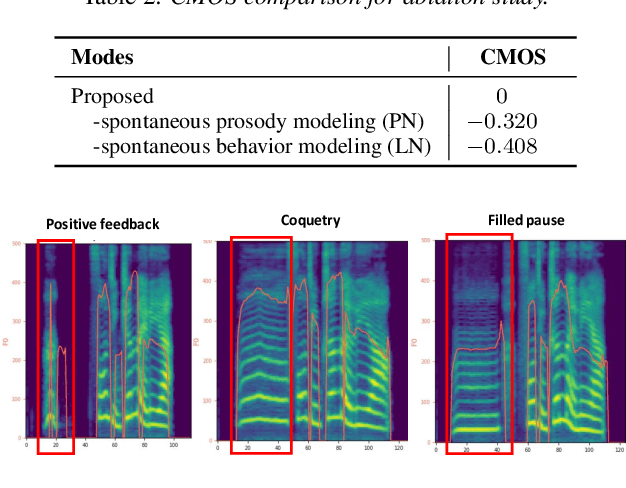Yicheng Zhong
Optimizing Neural Speech Codec for Low-Bitrate Compression via Multi-Scale Encoding
Oct 21, 2024



Abstract:Neural speech codecs have demonstrated their ability to compress high-quality speech and audio by converting them into discrete token representations. Most existing methods utilize Residual Vector Quantization (RVQ) to encode speech into multiple layers of discrete codes with uniform time scales. However, this strategy overlooks the differences in information density across various speech features, leading to redundant encoding of sparse information, which limits the performance of these methods at low bitrate. This paper proposes MsCodec, a novel multi-scale neural speech codec that encodes speech into multiple layers of discrete codes, each corresponding to a different time scale. This encourages the model to decouple speech features according to their diverse information densities, consequently enhancing the performance of speech compression. Furthermore, we incorporate mutual information loss to augment the diversity among speech codes across different layers. Experimental results indicate that our proposed method significantly improves codec performance at low bitrate.
Spontaneous Style Text-to-Speech Synthesis with Controllable Spontaneous Behaviors Based on Language Models
Jul 18, 2024



Abstract:Spontaneous style speech synthesis, which aims to generate human-like speech, often encounters challenges due to the scarcity of high-quality data and limitations in model capabilities. Recent language model-based TTS systems can be trained on large, diverse, and low-quality speech datasets, resulting in highly natural synthesized speech. However, they are limited by the difficulty of simulating various spontaneous behaviors and capturing prosody variations in spontaneous speech. In this paper, we propose a novel spontaneous speech synthesis system based on language models. We systematically categorize and uniformly model diverse spontaneous behaviors. Moreover, fine-grained prosody modeling is introduced to enhance the model's ability to capture subtle prosody variations in spontaneous speech.Experimental results show that our proposed method significantly outperforms the baseline methods in terms of prosody naturalness and spontaneous behavior naturalness.
ExpCLIP: Bridging Text and Facial Expressions via Semantic Alignment
Sep 11, 2023Abstract:The objective of stylized speech-driven facial animation is to create animations that encapsulate specific emotional expressions. Existing methods often depend on pre-established emotional labels or facial expression templates, which may limit the necessary flexibility for accurately conveying user intent. In this research, we introduce a technique that enables the control of arbitrary styles by leveraging natural language as emotion prompts. This technique presents benefits in terms of both flexibility and user-friendliness. To realize this objective, we initially construct a Text-Expression Alignment Dataset (TEAD), wherein each facial expression is paired with several prompt-like descriptions.We propose an innovative automatic annotation method, supported by Large Language Models (LLMs), to expedite the dataset construction, thereby eliminating the substantial expense of manual annotation. Following this, we utilize TEAD to train a CLIP-based model, termed ExpCLIP, which encodes text and facial expressions into semantically aligned style embeddings. The embeddings are subsequently integrated into the facial animation generator to yield expressive and controllable facial animations. Given the limited diversity of facial emotions in existing speech-driven facial animation training data, we further introduce an effective Expression Prompt Augmentation (EPA) mechanism to enable the animation generator to support unprecedented richness in style control. Comprehensive experiments illustrate that our method accomplishes expressive facial animation generation and offers enhanced flexibility in effectively conveying the desired style.
 Add to Chrome
Add to Chrome Add to Firefox
Add to Firefox Add to Edge
Add to Edge